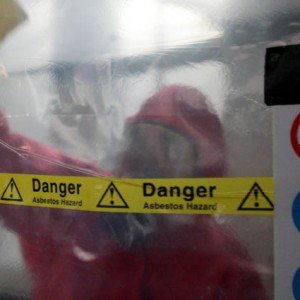 By Paul Clarke-Scholes of Clifford Devlin
By Paul Clarke-Scholes of Clifford Devlin
For removing Notifiable asbestos containing material for example, sprayed coatings, asbestos insulating board (AIB) and pipework insulation, the usual procedure is that the contractor prepares a Plan of Work and completes an ASB5 Notification Form which are both submitted to the enforcing authority (HSE) 14 days before the work commences.
ALG 04/12 memo states “A shorter time may be allowed under exceptional circumstances”.
It is the HSE’s policy that waiver requests will only be granted only when there is a genuine emergency or equally pressing reason.
Waivers are unlikely to be granted where there has been a failure to manage asbestos or to accommodate lack of foresight and planning by a client or a contractor, unless an immediate risk of significant exposure has been created and the area concerned cannot be sealed off to prevent that exposure. Clients need to be very sure that areas cannot simply be sealed and left for 14 days.
Examples of scenarios where a waiver will be considered are given as:
- Cases where there is an imminent risk to health, the environment, or where there is public alarm, and the risk cannot be avoided simply by leaving the area and allowing it to remain undisturbed, and/or the area cannot be sealed.
- Cases where asbestos is found during work and its presence would not have been reasonably foreseeable or reasonably practicable to detect (N.B. this is unlikely to be the case where an appropriate refurbishment/demolition survey as required by Regulation 5 has been carried out).
- Cases where a breakdown in plant or equipment requires urgent remedial action (N.B. compliance issues with Regulation 4 may be examined).
- Cases where there is, or is liable to be, worry or hardship for domestic clients, including old or infirm persons.
All waiver requests must be submitted with:
- FOD ASB5 Form
- A suitable and sufficient method statement and equipment specification, including a diagram showing the arrangement of the Negative Pressure Units (NPUs) and location of the Decontamination Unit (DCU) and transit route (if proposed)
- A written confirmation from the contractor’s client to support the request (i.e. evidence from the client that there is an emergency or equally pressing reason)
I would like to draw your attention to the last item and how we require such written confirmation to be phrased as an instruction to proceed with the application and includes the grounds on which the Client believes that the application is justified. We strongly suggest that the instruction uses one of the criteria listed above.
It is highly likely that HSE will visit a site where a waiver application has been made and will ask the Client to justify the circumstances that gave rise to the need for the application. If HSE conclude that these circumstances are not justified, it may well serve a prohibition notice requiring the work to be halted with immediate effect. HSE will not be interested in considerations of cost or delay – control of risk presented by work with asbestos will be their only concern.
The restrictions on waivers are pretty explicit so do not apply if you don’t qualify. You will not receive it and an inspector may decide to call in on you the next day to ask why you applied and see what else may be going on.
Paul Clarke-Scholes is an asbestos consultant with contractor Clifford Devlin.
This is the seventh of a series of blogs which discuss the latest issues in asbestos management – next week Paul discusses the importance of correctly preparing the Plan of Work for asbestos remediation.
What makes us susceptible to burnout?
In this episode of the Safety & Health Podcast, ‘Burnout, stress and being human’, Heather Beach is joined by Stacy Thomson to discuss burnout, perfectionism and how to deal with burnout as an individual, as management and as an organisation.
We provide an insight on how to tackle burnout and why mental health is such a taboo subject, particularly in the workplace.


